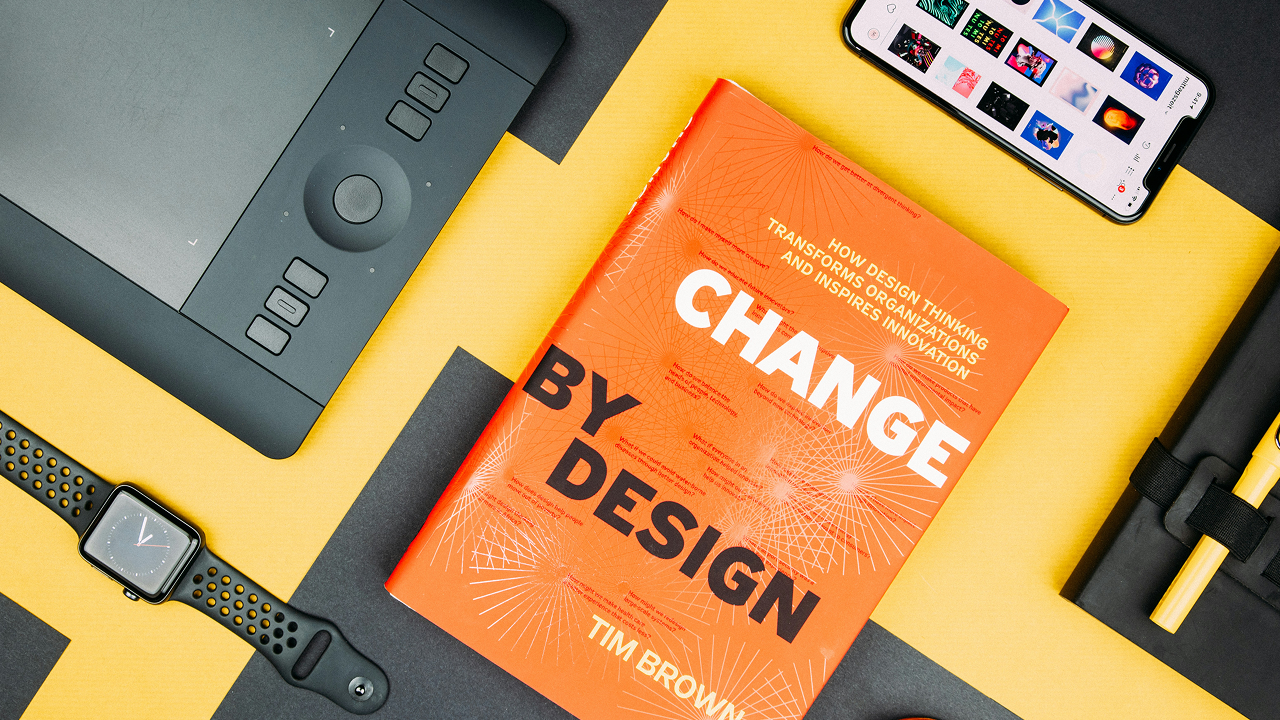Mobile-Friendly Landing Pages: Best Practices for Responsive Design

How often do you take out your phone to Google something?
Gone are the days of a clunky desktop and dial-up connection. Now, you can just whip out your smartphone and the internet’s at your fingertips. Back in 2012, just 10% of web traffic came from mobile users. Now? It’s skyrocketed to almost 60%.
Question: Is your website mobile-friendly?
To deliver the best experience for your audience on-the-go, you’ll need effective and responsive mobile website design. Otherwise, you’ll see people click onto your website – then immediately click away. Let’s talk about what it means to create responsive websites and the best practices for mobile-friendly landing pages.
What is Mobile-Friendly or Responsive Design?
Responsive website design means your website delivers an optimal user experience across any device – desktop, laptop, tablet, or smartphone. The pages of your site render and automatically adapt to the screen of the device of the user. Some elements (such as text and images) may change to improve the site’s appearance and navigation.
Considerations for responsive design include having web pages adapt to smaller screens, lack of keyboard, and touchscreen functionality. Elements should also resize to fit various screen sizes.
Importance of a Responsive Landing Page
First off: Google uses mobile-first indexing. The search engine uses the mobile version of your website’s content to crawl, index, and rank. While it’s not required to have a mobile version to appear in Google search results, it’s still recommended that you have responsive landing pages to improve your visibility and performance.
Then, of course, even if you do gain traffic to your website – if your landing pages aren’t optimized for mobile browsing, you’ll turn off your visitors and increase lost business opportunities. Mobile users account for 58% of global website traffic, with many large populations (such as India) having mobile-first online demographics.
If your website is too difficult to navigate or doesn’t display well on smartphones and tablets, website visitors will simply leave to find a better solution. You’d be losing a large chunk of potential customers simply because they can’t get around your pages on their mobile browsers.
Before Optimizing: Understanding the Mobile Audience
Your mobile audience may not fully overlap with your other audience segments. They may come from different demographics and have different user behaviours, so it’s crucial to understand these users. This way, you can design your mobile landing pages to meet their needs and search intent.
Check your mobile analytics to gain an understanding of the mobile customer journey, including insights on user behaviour for traffic from mobile devices. Assess what’s driving clicks and conversions, and watch the metrics so you can optimize the page design accordingly.
Best Practices for a Mobile-Friendly Landing Page
When designing mobile websites, there are some best practices for responsive landing pages. Here are 9 strategies to keep your landing pages mobile-friendly.
#1 — Mobile-responsive theme or template
The theme or template you select for your website plays a major role in the responsiveness of your web pages. It’s crucial that you select a theme that is optimized to adapt to mobile screens.
Site management systems and builders like WordPress, Squarespace, and Wix offer mobile-friendly themes and templates. WordPress is free, while Squarespace and Wix are paid. They all contain thousands of pre-built themes that perform well on phones and tablets.
You can even create pages that are specifically designed for mobile devices. Users on phones and tablets browse differently from desktop users, so you’ll need to customize the pages for different devices.
#2 — Adjusted text size
Most smartphones nowadays have screen sizes 6” or larger, versus laptops and desktops that are at least 11”. This means your headings and text content should be readable even on smaller screens. While users are able to zoom in on touchscreens, that is less accessible and poor user experience.
Too-small text also makes it difficult for users to click on links and navigation.
However, it’s still good to avoid too much large text on your web pages. Having large chunks of text or too-big fonts take up too much space, which makes viewing your page look annoying. Instead, highlight essential elements and text in mobile versions of your website to provide information that is curated, exact, and on the spot.
#3 — Singular highlighted CTA
When adapting your website to mobile devices, it’s important to keep your visual and text content concise and simplified – including your call-to-action (CTA). Minimizing the number of CTAs you have on your mobile pages keeps your mobile users more focused.
Keep in mind that the content at the top of your landing page grabs the most attention. This section ideally includes your primary (and clickable!) CTA for better accessibility and ease of navigation. The CTA you highlight should align with your goals – do you want to drive conversions, get people to subscribe, or have people sign up?
#4 — Single-column layout
Multi-column layouts look great on laptop and desktop screens, but do not translate well to mobile devices. Images and text will become too compressed, and will be hard to read or understand. Too-wide layouts will also cause clunky and inconvenient side-scrolling.
A clear and clean single-column layout for mobile screens ensures an effortless scrolling experience for users. It keeps all content within the confines of the screen, which keeps people on the page. It’s also easier on the eye and more accessible, so users will consume your content or browse your pages more comfortably.
#5 — Optimized forms
It’s less convenient to fill in forms and type in fields on mobile devices given the touchscreen keyboard. The screens are also smaller, so tapping each field to input information is also unwieldy. Streamline forms so they’re easy to fill out and scroll through, and minimize the information you collect (just name and email if you can get away with it). Otherwise, people will be too lazy to input anything.
Ideally, forms should be designed to pop up and fit within the page size. Users should not have difficulty closing the form or clicking away from your forms.
#6 — Touchscreen-friendly navigation
Your site navigation, such as the menu, should be simple and short. Mobile devices have limited screen space, so users often look for websites that offer navigation that’s touchscreen-friendly and thumb-friendly. Too many pages and subpages can confuse a mobile user since they will have difficulty reaching the content they wish to access.
#7 — Minimized visuals
Digital organization and content layout are critical in mobile formats. Don’t shy away from using white space to emphasize certain elements and your limited visuals, so you don’t overwhelm your users. It’ll look cleaner and more striking as well.
The visual elements you do employ should be visible even on small screens, but compressed to limit loading time. Too-large images and videos that don’t load quickly and take up too much space can turn off users from scrolling further.
A technique to consider for images is to use relative measurements such as percentages instead of flat pixel sizing. Pixels do not scale, so using pixel measurements will not translate well into mobile pages. Percentages, on the other hand, will adapt to the size of the display screen.
#8 — Sticky headers or footers
It’s more unwieldy to scroll up or down on a touchscreen, especially on longer pages. Creating sticky headers or footers keeps important information in a fixed spot on the screen – including brand name or logo and the menu bar. You can also include a search feature to help users navigate your site and find what they’re looking for.
Maintaining your logo or brand name at the top or bottom of your page also increases brand awareness and visibility. It keeps your brand within the vision of the visitor.
#9 — Quick loading times
Not everyone using the internet on their mobile devices is hooked up to wifi, and mobile data may not have strong connections. Mobile landing pages, therefore, need to load quickly – take too long, and you’ll see higher bounce rates. Your page should load within 0–4 seconds, as conversion rates drop by an average of 4% for each additional second after that. The sweet spot for load time is 0–2 seconds.
You can limit landing page loading time by limiting the elements featured. Minimize visuals and videos (and turn off autoplay!), and keep elements simple. Use compressed images (maximum 72 DPI) so they load faster. For videos, you can upload them to third-party hosting sites then embed them into your website to lighten your virtual weight.
It’s also important to optimize the CSS of your website. Your code should be as light as possible, since bulky code takes longer to render and load.
Keep It Simple
Mobile websites are streamlined and lower-powered versions of their desktop counterparts. It’s essential to keep things simple so you keep people on your pages and rank on search engines. This way, anyone on the go can whip out their phones or tablets, look something up, and then find your website. And they won’t click away when they visit your brand!
Want to optimize your landing pages for responsive designs? Elevate your online presence with Kika’s landing page development services so you can generate targeted leads and convert your ideal customers. Don’t let your mobile audience get left behind!
Contact Kika today for a free marketing consultation.





